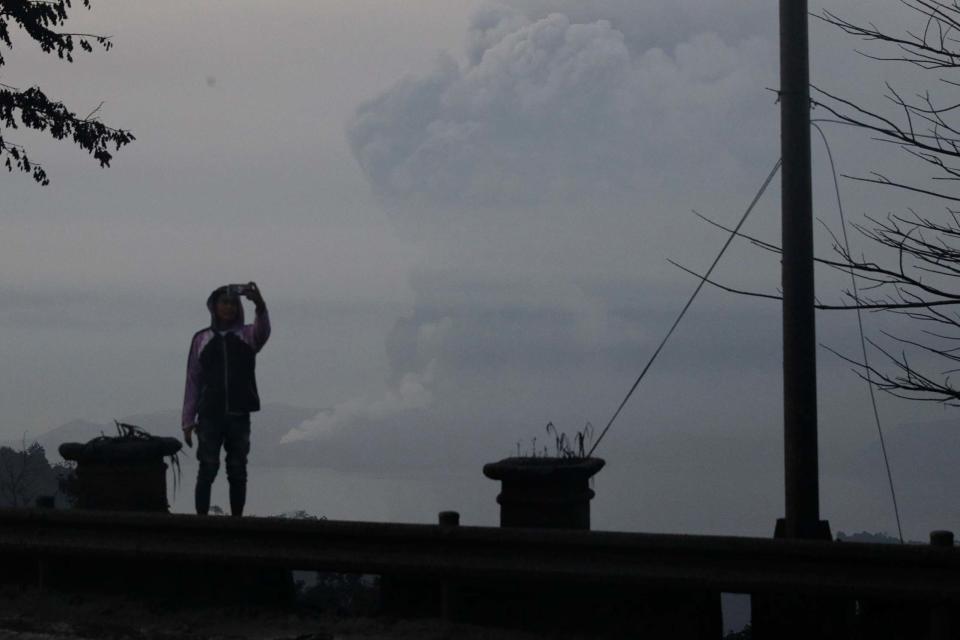Taal volcano selfie seekers accused of hampering relief efforts by 'clogging roads with traffic'

Selfie seekers attempting to take photos of the Taal volcano have been accused of delaying eruption relief efforts by creating extra traffic.
Hundreds of thousands of people living near the Philippines volcano have fled amid fears of an imminent and potentially fatal eruption - with ash clouds coating sites with volcanic dust for miles around.
However, this has not put off curious tourists from heading towards the area in the hope of taking pictures of the dramatic scene.
This has led to increased traffic in affected areas which are already struggling to cope with the extra vehicles from the emergency response, according to locals.
"The roads are already narrow and more and more people are driving in to take pictures of the volcano erupting and take selfies with the big cloud behind them," Maria Amurao, who lives near to the volcano in the Philippines, told the Standard.
"The Filipino roads are already famous for being bad in traffic, so the tourists coming in are delaying the help from coming in.
"It's a bit sick to think that people are coming over during a dangerous time when we, the residents, are trying to get to safety."
Masks to protect people who would be forced to breathe in the particulates are in short supply, Ms Amurao said
"There is now shortage of masks and so more are supposed to come in but because the roads are blocked, it is taking ages for that kind of help to come in," she said.
Photo-seeking tourist Honey Rose Isturias visited Tagaytay from nearby Cavite to witness the volcanic activity and to take selfies.
She told Al Jazeera: "We climbed Taal last year and saw its crater up close.
"We thought it would be nice to come back.
"It's a bit scary, but also terrifyingly beautiful."
About 125,000 people have fled their homes in hardest-hit Batangas province, south of Manila, taking shelter across at least 373 evacuation sites.
The volcano has remained at alert level four which is the second-highest warning.
It indicates a hazardous explosive eruption is possible in hours or days.
Last week, a set of dramatic wedding photographs captured the moment the volcano suddenly flared into life.
Despite the growing threat, Chino Vaflor and Kat Bautista Palomar continued with their wedding ceremony at a venue overlooking the island.
Wedding photographer Randolf Evan told the BBC: “We could feel the ash raining on our clothes. But it didn’t feel alarming until night time came when it became a bit heavier and mud-like.”
Read more
Ravaged Australia sees a month’s rain after devastating bushfires

 Yahoo News
Yahoo News 